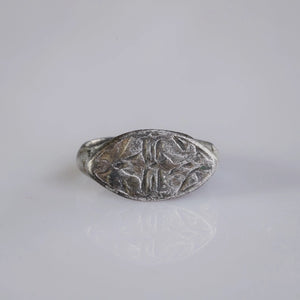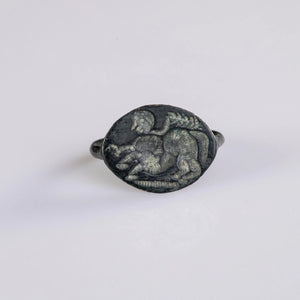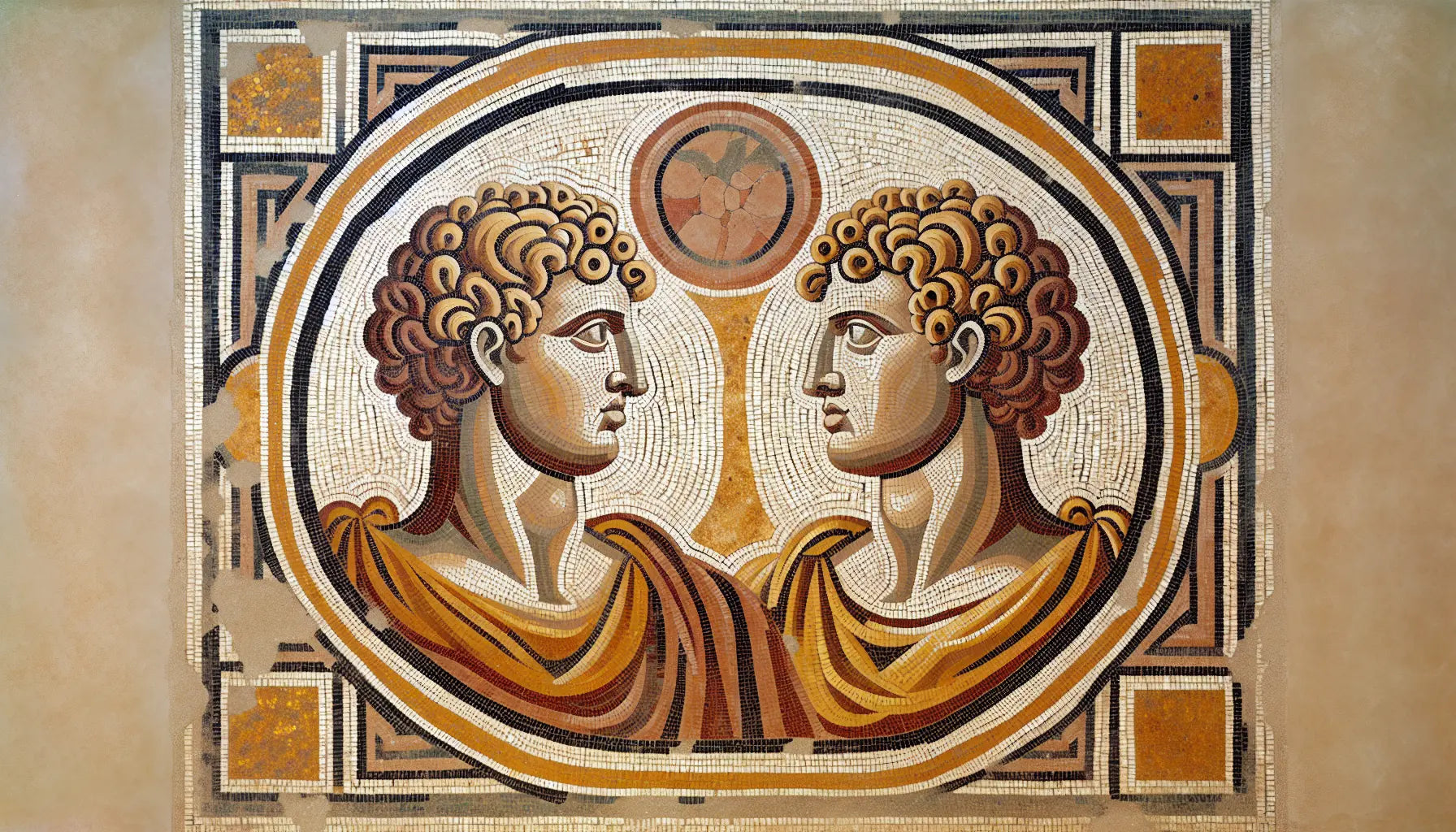Interesting facts
Did Two Brothers Rule Rome? Exploring the Influence of the Gracchi Brothers in the Roman Republic
When we think of the great rulers of ancient Rome, names like Julius Caesar, Augustus, or even Nero might leap to mind—figures whose power shaped the destiny of a vast empire. Yet, long before the empire rose in its full glory, Rome was a republic, a complex and often fragile political experiment. Within this republic, two brothers named Tiberius and Gaius Gracchus emerged, not as emperors or kings, but as passionate reformers whose actions rocked the foundations of Roman society. They never wore the crown, never seized absolute control—but their influence was profound. This raises an intriguing question: Did these two brothers, through their fierce advocacy and tragic fates, in some sense “rule” Rome?
The Roman Republic: A Stage Set for Conflict
To grasp the significance of the Gracchi brothers, we must step back into the Roman Republic of the 2nd century BCE. Established from the ashes of monarchy in the late 6th century BCE, the Republic was built on a system of checks and balances meant to prevent anyone individual from gaining too much power. Instead of a king or emperor, Rome was governed by a complex web of elected officials, assemblies, and magistrates. The Senate—a body dominated by wealthy patricians, Rome’s aristocratic elite—held immense influence, steering the Republic's policies and decisions.
Yet beneath this surface of order simmered deep social and economic tensions. The Republic relied heavily on small-scale farmers who formed the backbone of the army and society. However, over decades, many of these farmers were displaced, their lands swallowed up to create vast estates called latifundia, worked mainly by slaves. The growing inequality left countless Romans landless and struggling to survive in the expanding cities. This created fertile ground for political figures willing to challenge patrician interests and champion the cause of the common people. Enter

Tiberius Gracchus: The First Tribune’s Bold Move
Tiberius Gracchus, the older of the two, first took center stage in 133 BCE when he was elected tribune of the plebs, a powerful position designed to protect the rights of ordinary Romans. Unlike many before him, Tiberius used this office to confront the Senate head-on. His central reform was the Lex Sempronia Agraria, a land law aimed at limiting the amount of public land any individual could hold and redistributing the confiscated excess to poorer citizens, particularly veteran farmers whose livelihoods had been ravaged.
Imagine the scene: a young aristocrat standing before the Senate, challenging centuries of entrenched privilege and demanding justice on behalf of the dispossessed. The proposal cut into the wealth and power of the ruling elites, who were not prepared to give up their expansive estates quietly. Political debate swiftly turned to hostility, and tension in Rome escalated beyond mere words.
Tiberius's boldness sparked fear among many senators, and when he sought a second term—a move considered radical and illegal—his opponents struck back with violence. In 133 BCE, he was lynched by a mob of senators’ supporters, marking one of the earliest instances of political bloodshed within the Republic. His assassination sent shockwaves through Roman society. It was clear that reform was not only unpopular with the elite but dangerous to those who dared to pursue it.
But Tiberius Gracchus’s death did not silence his cause; rather, it ignited a spark that his younger brother would carry forward.
Gaius Gracchus: Taking the Fight Further
Gaius Gracchus stepped into the political arena around a decade later, in the 120s BCE, inheriting his brother’s reformist zeal but adopting a wider vision. Unlike Tiberius, whose efforts focused primarily on land redistribution, Gaius tackled several pressing social issues simultaneously.
One of Gaius’s most notable reforms addressed food insecurity in Rome’s burgeoning urban population. He introduced a program to sell subsidized grain to the poor at reduced prices, a pioneering move that recognized the state's responsibility to its citizens’ welfare. This was more than charity—it was a structural response to a growing crisis.
Additionally, Gaius sought to extend Roman citizenship to allied communities in Italy, a step that threatened the exclusive privileges of established Roman citizens and disrupted the delicate balance of power. By broadening political inclusion, he challenged not only social norms but the political foundation of Rome itself.
His reforms also targeted the judicial system and military recruitment, revealing his understanding that deep social inequities required comprehensive solutions. Yet, like his brother, Gaius faced fierce opposition. The Senate, unwilling to cede power, mobilized resistance through political maneuvering and violence.
In 121 BCE, after a particularly heated clash with his enemies, Gaius Gracchus met a tragic end. Cornered and outnumbered, he took his own life to avoid capture—his death marking another dark chapter in Rome’s descent into partisan violence.
The power struggles the Gracchi faced are eerily mirrored even in modern artwork, portraying the tension and hope they represented. A powerful visual representation can be explored further through Aurora Antiqua's gallery.
The Gracchi Legacy: More Than Just Two Brothers
So, did the Gracchi brothers rule Rome? The answer lies in understanding the nature of power in the Republic. They never became consuls or dictators; they held no supreme office nor commanded armies in the traditional sense. Instead, their influence came from their ability to shape public opinion and mobilize popular assemblies in favor of reform.
In a way, they “ruled” by their vision—the power to change minds, challenge entrenched interests, and push Rome toward a more inclusive ideal of citizenship and fairness. Their legacy is felt less in titles and more in the tremors their actions sent through the Republic’s political landscape, shaking its foundations and exposing the fragility of its institutions.
The violent resistance they faced also exposed the Republic’s limits in adapting peacefully to social change. Their deaths foreshadowed the increasing turmoil that would engulf Rome, as competing factions turned more and more to bloodshed and civil war.
How did the Roman Republic's structure influence the actions and eventual downfall of the Gracchi brothers?
The Roman Republic's intricate structure, designed to distribute power and prevent any single individual from dominating, inadvertently set the stage for the Gracchi brothers' actions and downfall. As tribunes, Tiberius and Gaius had the mandate to advocate for the plebeians, but their reforms directly challenged the Senate's grip on power and exposed systemic flaws. The Republic's reliance on tradition and senatorial privilege created significant resistance to their progressive policies. This governance model fostered an environment where political and social reform was fraught with peril, fueling the tensions that ultimately led to their violent ends. Thus, the Republic's design, while intended for stability, became a catalyst for crisis when faced with the Gracchi's ambitious reforms.
The Human Side of the Gracchi Brothers’ Struggle
Beyond politics and history, the Gracchi brothers’ story is intensely human. It’s about ambition clashing with tradition, a desire for justice pitted against the inertia of power. One can almost picture Tiberius, a seasoned soldier fresh from campaigns in Spain, returning home determined to heal the wounds of Rome’s social fractures. His efforts were not merely academic—they were urgent and deeply personal.
Gaius, younger and perhaps more politically savvy, expanded his brother’s vision, understanding that no single reform could fix what was broken. His willingness to take on multiple fronts—land, food, citizenship, justice—speaks to a restless drive for change.
Together, they embodied hope and sacrifice—a brotherly bond forged not only by blood but by shared ideals. Their tragic ends remind us that reform is rarely peaceful or straightforward, especially when it threatens those in power. Yet their courage continues to inspire, illustrating the costs and necessities of standing up for what one believes is right.
Social Reform and Populism: A Reflection
The Gracchi brothers represent some of the earliest examples in history of populist leadership—a political style that emphasizes the rights and needs of ordinary people in opposition to elite interests. Their appeals to the plebeians, combined with their legislative efforts, demonstrate a subtle but powerful form of direct political engagement.
Yet their story also warns us about the dangers of polarization. Their reforms triggered fierce opposition, culminating in violence. The Republic’s failure to manage these conflicts peacefully shows how delicate the balance between reform and stability can be.
Wear History with Pride
Discover NowPolitical Violence: An Inevitable Outcome?
The violent deaths of Tiberius and Gaius Gracchus were harbingers of Rome’s political unraveling. Their assassinations broke a long-standing taboo against bloodshed in politics and revealed the Senate’s willingness to protect privilege at any cost.
This fracturing of political norms paved the way for future leaders like Julius Caesar to seize power through force rather than democratic consensus. In that sense, the Gracchi were both victims and symbols of a Republic in crisis.
Their stories highlight the dangers when political systems lack mechanisms to channel dissent constructively. When reformers face brutal suppression, societies risk spiraling into chaos and authoritarianism.
Were the Gracchi Brothers Unique?
While many figures before and after them attempted reform, the Gracchi stand out for their combination of personal courage, legalistic approach to change, and tragic martyrdom.
Unlike later leaders who relied heavily on military might or charismatic oratory, the Gracchi pushed for concrete reforms grounded in law and policy. They envisioned a Rome where citizenship and wealth were shared responsibilities and rights, not privileges reserved for a few.
Their story captures the eternal tension between innovation and tradition, between the desire for justice and the entrenched structures of power.
The Gracchi in Modern Perspective
In modern times, scholars across disciplines study the Gracchi not only as historical figures but as case studies in reform, populism, and political change.
Their legacy invites us to ask difficult questions: How can societies address inequality without tearing themselves apart? What price are we willing to pay for justice? How do leaders balance ambition with principle under pressure?
In regions still grappling with land inequality or political exclusion, echoes of the Gracchi’s battles resonate. Their story humanizes the struggle for reform, reminding us that behind every policy and protest are real people motivated by fear, hope, and a vision for a better future.
A Subtle Mention in Historical Scholarship
Throughout centuries of scholarship, the Gracchi brothers often serve as benchmarks marking the rise of social activism within republican frameworks. Their landmark law, the Lex Sempronia Agraria, is remembered as a milestone that showed the Republic’s potential—and limits—for reform. Consider reading more about this here.
Some modern historical tools, like the interactive system called Imperium Romanum, analyze these reforms and political shifts, highlighting how figures like the Gracchi influenced Rome without becoming traditional rulers.
Conclusion: Did Two Brothers Rule Rome?
So, did Tiberius and Gaius Gracchus truly rule Rome? Not in the straightforward sense of emperors or kings. The Roman Republic was expressly designed to avoid concentrated personal rule, relying on shared governance and collective decision-making.
Yet, these two brothers wielded a different kind of power—manifested not in official titles or armies, but in their ability to inspire change, challenge inequality, and provoke debates that would shape the Republic’s future.
Their story is a testament to how leadership transcends office. Rulership can mean stirring the conscience of a people, pushing society toward justice—even if it comes at a high cost.
In that subtle but profound way, Tiberius and Gaius Gracchus did, in their own right, hold a form of rulership. Not over lands or legions, but over the ideals of fairness and reform that continue to echo through history to this day.
How did Tiberius Gracchus impact Rome?
Tiberius Gracchus introduced the Lex Sempronia Agraria, a reform aimed at redistributing public land to poor citizens, challenging the wealth and power of the elite, and igniting social reform debates.
What reforms did Gaius Gracchus introduce?
Gaius Gracchus implemented subsidized grain for the poor, extended Roman citizenship, and reformed the judicial system, addressing multiple social and political issues in Rome.
What is a unique way to connect with history through artifacts?
Wearing authentic restored ancient artifacts as jewelry, like the 'Diana' Roman Silver Intaglio Ring, allows you to connect directly with historical narratives and heritage.




